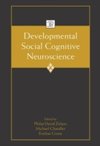
-
 Anglický jazyk
Anglický jazyk
Synaptic Modulators
Autor: Leslie Iversen
1 Effects of Drugs on Energy Metabolism of the Brain and on Cerebral Transport.- 1. Introduction.- 2. Drugs and Brain Cell Energetics.- 3. Neurotropic Drugs Affecting Electron and Energy Transfer.- 3.1. Barbiturates.- 3.2. Uncouplers of Brain Respiration.-... Viac o knihe
Na objednávku, dodanie 2-4 týždne
49.49 €
bežná cena: 54.99 €
O knihe
1 Effects of Drugs on Energy Metabolism of the Brain and on Cerebral Transport.- 1. Introduction.- 2. Drugs and Brain Cell Energetics.- 3. Neurotropic Drugs Affecting Electron and Energy Transfer.- 3.1. Barbiturates.- 3.2. Uncouplers of Brain Respiration.- 3.3. Fluoroacetate.- 3.4. Methionine Sulfoximine.- 3.5. Chlorinated Hydrocarbon Insecticides.- 3.6. 2-Deoxyglucose.- 3.7. ?-Hydroxybutyrate.- 3.8. Aminooxyacetate.- 3.9. Haloperidol.- 4. Drugs and Brain Cell Permeabilities.- 4.1. Tetrodotoxin.- 4.2. Local Anesthetics: Cocaine, Procaine, Lidocaine, etc.- 4.3. Ouabain.- 4.4. Protoveratrine.- 5. Drugs Affecting Cerebral Biogenic Amine Levels.- 5.1. Reserpine.- 5.2. Phenothiazines.- 5.3. Imipramine.- 5.4. Amphetamines.- 5.5. Monoamine Oxidase Inhibitors.- 5.6. Lysergic Acid Diethylamide (LSD).- 5.7. Amino Acid Decarboxylase Inhibitors.- 6. Ethanol.- 7. References.- 2 Role of Cyclic Nucleotides in the Nervous System.- 1. Introduction.- 2. Enzymatic Formation, Degradation, and Action of Cyclic Nucleotides.- 2.1. Adenylate Cyclases.- 2.2. Guanylate Cyclases.- 2.3. Phosphodiesterases.- 2.4. Protein Kinases.- 2.5. Phosphoprotein Phosphates.- 3. Accumulation of Cyclic Nucleotides.- 3.1. Cyclic AMP in Brain Slices.- 3.2. Cyclic GMP in Brain Slices.- 3.3. Cyclic AMP in Ganglia.- 3.4. Cyclic AMP in Cells of Neuronal or Glial Origin.- 4. Functional Roles of Cyclic Nucleotides.- 4.1. Effects on Enzymatic Processes.- 4.2. Cell Morphology, Differentiation, and Growth.- 4.3. Membrane Phenomena.- 4.4. Centrally Active Drugs and Levels of Cyclic Nucleotides in Brain.- 4.5. Behavioral Effects.- 5. Conclusion.- 6. References.- 3 Purinergic Transmission.- 1. Introduction.- 2. Distribution of Purinergic Nerves.- 2.1. Gastrointestinal Tract.- 2.2. Lung and Trachea.- 2.3. Vascular System.- 2.4. Urinogenital System.- 2.5. Eye.- 2.6. CNS.- 3. Fine Structure and Histochemistry of Purinergic Nerves.- 3.1. Fine Structure of Purinergic Nerves.- 3.2. Histochemical Approaches to Localization of Purinergic Nerves.- 4. Electrophysiology of Purinergic Transmission.- 4.1. Inhibitory Junction Potentials.- 4.2. Postsynaptic Action of Transmitter.- 4.3. Interaction of Purinergic with Cholinergic and Adrenergic Responses in Single Cells.- 5. Physiological Roles of Purinergic Nerves.- 5.1. Reflex Relaxation of the Esophagogastric Junction.- 5.2. ¿Receptive Relaxation¿ of the Stomach.- 5.3. ¿Descending Inhibition¿ of Peristalsis.- 5.4. Reflex Relaxation of the Internal Anal Sphincter.- 5.5. Vomiting and Nausea.- 5.6. Bronchodilatation, Asphyxia, Asthma.- 5.7. Coughing.- 5.8. Inflammation of the Skin.- 5.9. Activities in the CNS.- 6. Evidence that ATP is the Purinergic Nerve Transmitter.- 6.1. Formation and Storage of ATP.- 6.2. Release of ATP.- 6.3. Direct Actions of Purine Nucleotides and Nucleosides on Smooth Muscle.- 6.4. Inactivation of ATP.- 6.5. Antagonism and Potentiation of Responses to Nerve Stimulation and ATP.- 7. Pharmacology of Adenyl Compounds and Purinergic Transmission.- 7.1. Inhibitory and Excitatory Action of Adenyl Compounds.- 7.2. Drugs That Antagonize the Action of Adenyl Compounds.- 7.3. Drugs That Potentiate the Action of Adenyl Compounds.- 8. Speculations on the Evolution and Development of Purinergic Nerves.- 9. Summary.- 10. References.- 4 Hypothalamic Hypophysiotropic Hormones.- 1. Introduction.- 2. Hypophysiotropic Hormone Action.- 2.1. Characteristics.- 2.2. Mechanisms of Hypophysiotropic Action of Peripheral Hormones.- 3. Thyrotropin Releasing Factor (TRF).- 3.1. Effect of TRF on Secretion of Other Pituitary Hormones.- 3.2. Psychotropic Actions of TRF.- 3.3. TRF Binding Studies.- 3.4. TRF Structure-Function Relationship Studies.- 4. Luteinizing Hormone Releasing Factor (LRF).- 4.1. LRF Structure-Function Studies.- 4.2. LRF Binding Studies.- 4.3. Behavioral Effects of LRF.- 5. Corticotropin Releasing Factor (CRF).- 6. Prolactin Release Inhibiting Factor (PIF).- 7. Growth Hormone Releasing Factor (GRF).- 8. Somatostatin-Somatotropin Release Inhibiting Factor (SRIF).- 9. References.- 5 Binding, Metabolism, and Action of Steroid Hormones in the Central Nervous System.- 1. Introduction.- 2. Estrogens.- 2.1. Determination of the Estradiol Concentration in Dissected Brain Regions.- 2.2. Determination of the Cellular Localization of [3H]Estradiol by Autoradiography.- 2.3. Subcellular Distribution of Estradiol.- 2.4. Developmental Changes in the Estradiol Binding System.- 2.5. Changes in Estradiol Binding During the Estrus Cycle.- 2.6. Behavioral and Physiological Effects of Estrogen Agonists and Antagonists.- 2.7. Sites of Estrogen Action.- 2.8. Temporal Aspects of Estrogen Action.- 3. Androgens.- 3.1. Regional and Cellular Distribution of Radioactivity After an Injection of [3H]Testosterone in the Castrated Male Rat.- 3.2. Testosterone Metabolism in Peripheral Tissues: The Idea of Testosterone as a ¿Prehormone¿.- 3.3. Metabolism of Testosterone in the Brain.- 3.4. Saturability and Stereoselectivity of Androgen Retention.- 3.5. Androgen-Binding Macromolecules.- 3.6. Androgen Retention in Birds.- 3.7. Comparison of Sites of Androgen Binding and Androgen Action in the Adult.- 3.8. Androgen Binding and Action During Development.- 3.9. Chemical Specificity of Androgen Action: Is There More Than One Type of Androgen Receptor in the Brain?.- 3.10. Role of Aromatization in Androgen Action.- 4. Glucocorticoids.- 4.1. Anatomical Distribution of Corticosterone Binding Sites in the Rat.- 4.2. Saturability and Stereoselectivity of Corticosterone Retention.- 4.3. Subcellular Distribution of Corticosterone.- 4.4. Corticosterone-Binding Macromolecules in the Nucleus and Cytoplasm in Vivo.- 4.5. Corticosterone Binding in Vitro.- 4.6. Experiments on Other Glucocorticoids and Other Species.- 4.7. Metabolism of Glucocorticoids in the Brain.- 4.8. Measurements of Endogenous Glucocorticoids in the Nervous System.- 4.9. Correlations Between Corticosterone Binding and Corticosterone Action.- 5. Progestins.- 5.1. Regional Differences in the Retention of Progesterone.- 5.2. Progesterone Metabolism in Vivo and in Vitro.- 5.3. Saturability of Progesterone Retention.- 5.4. Subcellular and Cellular Localization of Progesterone.- 5.5. Role of Progesterone in Female Mating Behavior.- 5.6. Anatomical and Chemical Specificity of Progesterone Action in the Brain.- 6. Conclusion.- 7. References.- 6 Opiate Receptor Mechanisms.- 1. Introduction.- 2. Biochemical Identification of Opiate-Receptor Binding.- 3. Localization of the Opiate Receptor to Synaptic Membranes.- 4. Regional Distribution of Opiate-Receptor Binding.- 5. Effect of Destruction of Norepinephrine, Serotonin, Acetylcholine, and Dopamine Tracts on Opiate-Receptor Binding.- 6. Phylogenetic Distribution of the Opiate Receptor.- 7. Effect of Sodium on Opiate-Receptor Binding.- 8. Toward a Theory of Addiction.- 9. References.- Addendum to Chapter 2.
- Vydavateľstvo: Springer US
- Rok vydania: 2012
- Formát: Paperback
- Rozmer: 254 x 178 mm
- Jazyk: Anglický jazyk
- ISBN: 9781468431797












